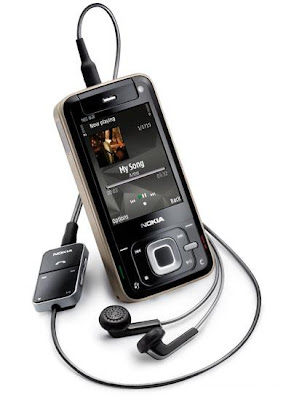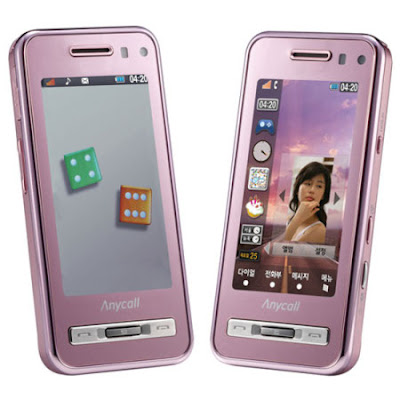HTC Touch Diamond Review

Introduction
The HTC Touch was the first real competition the iPhone faced, even if it didn’t necessarily set out to be. HTC was surely trying to capitalize on the popularity of Apple’s all-touch device, but Windows Mobile is a more open though much clunkier UI than OS X, and ultimately the devices were really in a different class. Sure, TouchFLO gave a finger-friendly skin to the Touch, but in reality the iPhone was built from the ground-up as a consumer friendly, media-oriented device whereas the Touch was a Windows Mobile business device that happened to lose the keyboard and get some fancy software. Don’t get us wrong, we loved the Touch, but it just wasn’t iPhone material.Now comes the second generation, dubbed the Touch Diamond, and it’s obvious that HTC is ready to take on the iPhone properly this time around. Gone is the gimmicky TouchFLO, replaced by a completely overhauled and practical TouchFLO 3D. Web surfing is handled beautifully by Opera Mobile 9.5 instead of Mobile IE; 7.2Mbit/s HSDPA and Wi-Fi makes the experience that much better. Users can browse photo albums and listen to their music directly from the homescreen. Little things, such as resting the phone on its face to trigger silent mode or the phone waking up when the stylus is removed, reaffirm HTC CFO Cheng Hui-min’s description as "the most important product for HTC this year."
Included in the Diamond-shaped package you’ll find:
Li-Ion battery
Stereo headphones
Extra stylus
AC Charger with USB port
UK adapter with US travel adapter
USB data cable
User CDs
Li-Ion battery
Stereo headphones
Extra stylus
AC Charger with USB port
UK adapter with US travel adapter
USB data cable
User CDs
Design
The Touch Diamond is a beautifully crafted phone. HTC has obviously paid attention to every little detail, and the result is amazing. The first time we unboxed the Touch we were astonished at just how small it was, yet HTC has managed to go even smaller with the Diamond all while packing in worlds of new features. The Diamond is a bit taller than the original Touch, but is thinner and noticeably narrower.
The 2.8” touchscreen monopolizes most of the Diamond’s real estate. It is resistive as opposed to capacitive, meaning that it will work with a stylus and even when the user is wearing gloves. It is responsive and quick, allowing for a buttery smooth TouchFLO 3D interface. The screen’s VGA resolution means everything is crisp as can be. It auto-adjusts the backlight based on the lighting conditions (the user can override this) and we had no problems viewing the screen even in direct sunlight. It’s downright beautiful.Centered at the top of the scree n is the earpiece, and off to the right is the front-facing VGA secondary camera. Below the display are the navigation keys. There are four buttons situated at the corners of this area, and moving clockwise from top left you will find Home, Back, End and Send. In the middle is the circular directional pad. The buttons are a mix of physical and capacitive; most can be pressed, but the center button is also capacitive (which is used for certain things like the camera’s autofocus) and running your finger around the outside of the d-pad acts as an iPod-esque scroll wheel for media playback control. In addition to the scroll, you can click left, right, up and down in that area, just like a traditional d-pad. With the exception of the center of the d-pad the buttons all lie flush and give the appearance that they may be touch-sensitive, but HTC has chosen wisely in making them physical buttons.
n is the earpiece, and off to the right is the front-facing VGA secondary camera. Below the display are the navigation keys. There are four buttons situated at the corners of this area, and moving clockwise from top left you will find Home, Back, End and Send. In the middle is the circular directional pad. The buttons are a mix of physical and capacitive; most can be pressed, but the center button is also capacitive (which is used for certain things like the camera’s autofocus) and running your finger around the outside of the d-pad acts as an iPod-esque scroll wheel for media playback control. In addition to the scroll, you can click left, right, up and down in that area, just like a traditional d-pad. With the exception of the center of the d-pad the buttons all lie flush and give the appearance that they may be touch-sensitive, but HTC has chosen wisely in making them physical buttons.
 n is the earpiece, and off to the right is the front-facing VGA secondary camera. Below the display are the navigation keys. There are four buttons situated at the corners of this area, and moving clockwise from top left you will find Home, Back, End and Send. In the middle is the circular directional pad. The buttons are a mix of physical and capacitive; most can be pressed, but the center button is also capacitive (which is used for certain things like the camera’s autofocus) and running your finger around the outside of the d-pad acts as an iPod-esque scroll wheel for media playback control. In addition to the scroll, you can click left, right, up and down in that area, just like a traditional d-pad. With the exception of the center of the d-pad the buttons all lie flush and give the appearance that they may be touch-sensitive, but HTC has chosen wisely in making them physical buttons.
n is the earpiece, and off to the right is the front-facing VGA secondary camera. Below the display are the navigation keys. There are four buttons situated at the corners of this area, and moving clockwise from top left you will find Home, Back, End and Send. In the middle is the circular directional pad. The buttons are a mix of physical and capacitive; most can be pressed, but the center button is also capacitive (which is used for certain things like the camera’s autofocus) and running your finger around the outside of the d-pad acts as an iPod-esque scroll wheel for media playback control. In addition to the scroll, you can click left, right, up and down in that area, just like a traditional d-pad. With the exception of the center of the d-pad the buttons all lie flush and give the appearance that they may be touch-sensitive, but HTC has chosen wisely in making them physical buttons.The entire front is housed in a dark, silvery reflective finish. The Diamond’s gunmetal frame is brushed stainless steel, which rings the outside of the phone and contributes to its fantastic weight. You will only find two physical keys around the phone; on the left is the volume rocker and up top is the power button. They are both long and flat, but are raised and offer enough travel to ensure that you have pressed the button.Each side has an etched phrase, “HTC INNOVATION” on the left and “4GB INTERNAL STORAGE” on the right. The power button on top sits to the left and in the center is the Diamond’s single speaker, which is loud enough and does not distort at high volumes. The bottom simply has the miniUSB port, which serves as the charging/data/headset jack.
The entire back of the phone is the battery cover. True to its name, the cover is faceted like a diamond. Near the top is the 3.2 megapixel, autofocus camera. The angular facet it sits in is bright, brushed stainless steel whereas the rest of the cover is piano black plastic. Simply slide the cover up to reveal the battery and SIM slot. At the bottom left is the stylus, which is held firmly in place by an internal magnet. If the phone is asleep and you remove the stylus it will wake up, anticipating that you want to use it.
It’s hard to find fault with the Diamond’s design. The size and weight make for a perfect in-hand feel. The construction is solid, and the stainless steel frame give a reassuring weight to the device. The dark silver finish and brushed steel accents give the Diamond an understated air of elegance. We could take or leave the faceted back, but you have to admit that it gives the Diamond some personality and the pattern is growing on us. About the only thing we can find fault with is the fingerprints; it seems that even thinking about the phone leaves prints all over. There is a pouch that purports to clean the phone when slipped in and out, but as it’s not an included accessory we were not able to test it out. That’s really the only complaint we could come up with though, the Touch Diamond is a



Comments